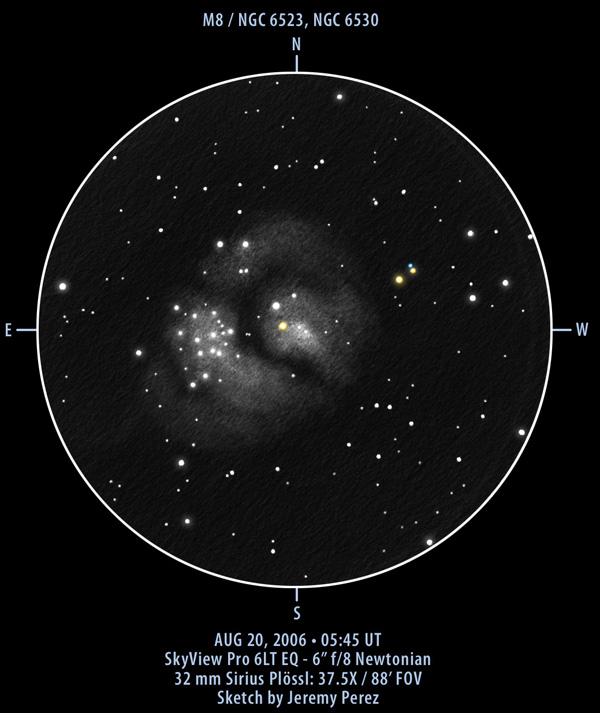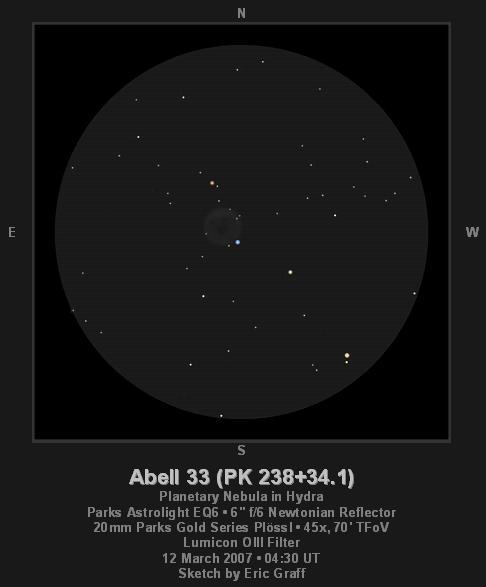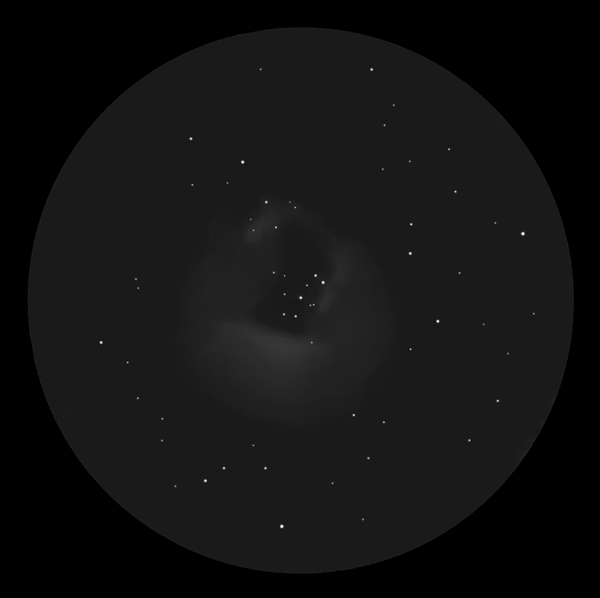M8 was on my list of “ambitious” sketches to draw (or redraw) for a couple years before I finally managed to tackle it. On my first attempt, I got skunked by clouds before I could finish the star field. I came back a couple nights later, and the outflow of clouds from a thunderstorm to the east threatened to bring things to a halt again. But I was patient and managed to wait out the weather.
This is such a rich and well-lit nebula/cluster, that it’s hard not to just relax and feast on its visual delights. But I had decided I was going to turn this one into a project. I wanted to capture the cluster and field stars as accurately and deeply as possible. This in itself can be a pretty tedious process, but the regular blackouts caused by interloping clouds made it very aggravating. Especially since I was doing the observation pretty late in the season, and Sagittarius was threatening to set on me. Observing shouldn’t be aggravating. Tedious from time to time, sure. But not aggravating. I was being stubborn
though, and I kept plugging along. An hour and 40 minutes later I was satisfied I had captured all I could, and as if on a merciful queue, the clouds went ahead and made a permanent home over the southwestern sky.
Something I find very interesting about the embedded cluster NGC 6530 is the grid-like geometry of its stars. It seems to bear an amplified kinship to the squared angles of M29–a junior sized favorite of mine. The UltraBlock (~UHC) filter does a great job of defining the boundaries and clots of brightness in the nebula, but I find the unfiltered view to be the most pleasing. Without the filter, the view is thickly seasoned with Milky Way field stars and the members of the open cluster just seem to nestle and burn themselves in their folded blanket of nebulosity. I noted some star color in a few places, and these are depicted in the sketch.
I created the base for this sketch on Strathmore sketch paper using 2H graphite for the initial star field. I then switched to HB graphite for the brighter stars. I then brushed in the nebulous regions with a blending stump loaded with graphite. Afterward, I replotted any stars that were blurred or diminished by the blending process.
After scanning the sketch and inverting it from negative to positive, I used a soft, transparent brush to add glow around the brighter stars. I then used a soft, transparent brush set to ‘color’ mode to apply color to the stars I had noted during my observation. Although I believe it is possible to overwork a sketch with digital tools, when care is taken not to overdo it, I’ve found these extra techniques very useful. In this case, I believe it helps to pop the brighter stars out as they appeared in the eyepiece. I feel it was particularly helpful for the core cluster stars that nestle in the nebula. In my opinion, that extra bit of glow helps merge them with the nebula and conveys the sense that they really are lighting it up, as it appeared through the telescope. Finally, the perception of color is an important part of my observations, and I feel that careful addition of color on the computer can handle this very nicely.
Object Information:
There are two main objects that compose this object. NGC 6530 which is the open cluster of stars, discovered in 1680 by Flamsteed. The nebula that these stars are imbedded in, NGC 6523, was discovered by Le Gentil in 1747. When Charles Messier catalogued it in 1764, he primarily described the cluster, and mentioned the nebula separately as surrounding the star, 9-Sagittarii. However, the nebula is now generally regarded as M8.
The distance to M8 is believed to be from 4850 to 6500 light years. If the distance given by David Eichler of 5200 light years is correct, then the nebula measures 140 x 60 light years across. The brightest portion of the nebula contains a region known as the Hourglass Nebula, which is region currently undergoing new star formation. There are also a number of dark nebulae known as globules in the Lagoon. These are collapsing protostellar clouds with diameters of about 10,000 AU.
Subject: M8/NGC 6523, 6530
Classification: Diffuse Nebula and Open Cluster
Position: Sagittarius [RA: 18:03:41.2 / Dec: -24:22:49]*
Size*: 90′ x 40′
Brightness*: bMag 5.0
Date/Time: August 19, 2006 – 10:45 PM MST (August 20, 2006 – 05:45 UT)
Observing Location: Anderson Mesa, AZ
Instrument: Orion SVP 6LT Reflector (150 mm dia./1200 mm F/L)
Eyepieces/Mag. 32 mm Sirius Plössl (37.5X)
Seeing: 3/10 Pickering
Transparency: Mag 6.8+ NELM
*Sources: SEDS, NGC/IC Project





